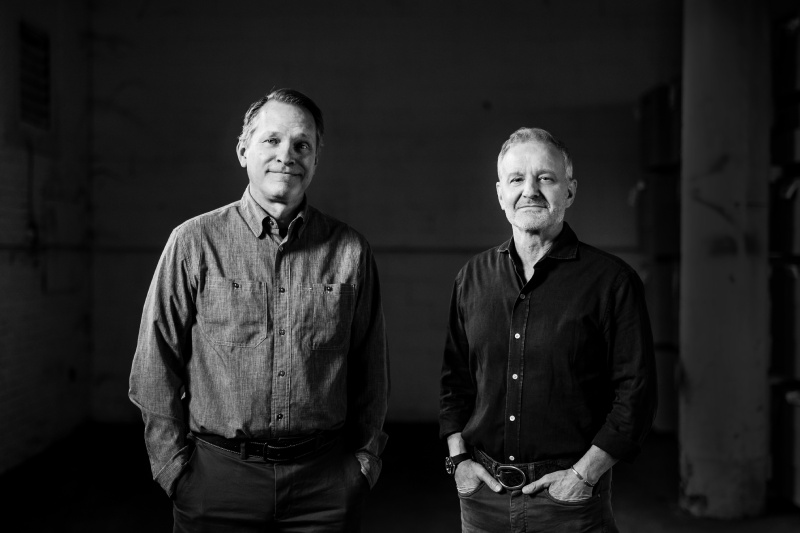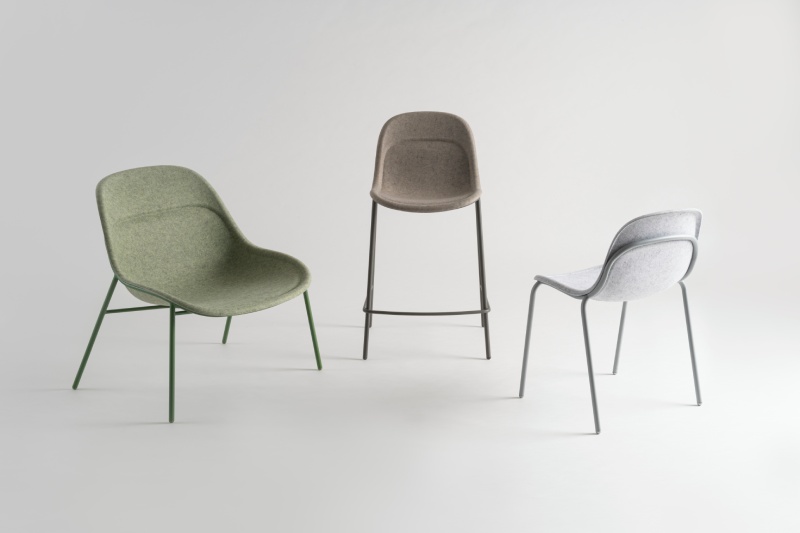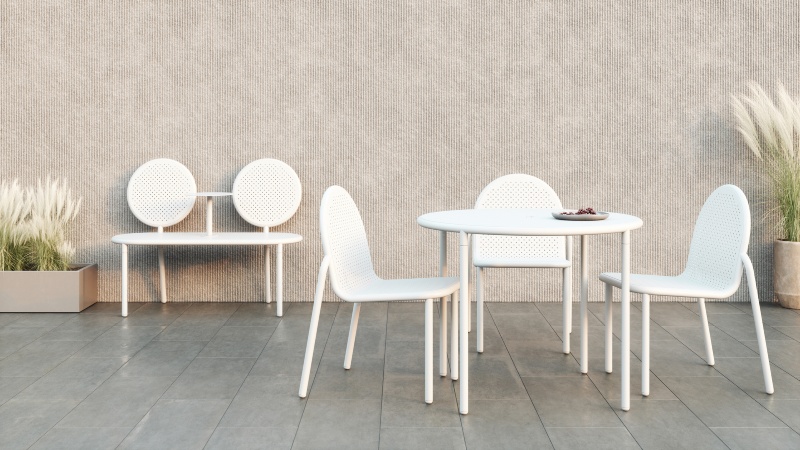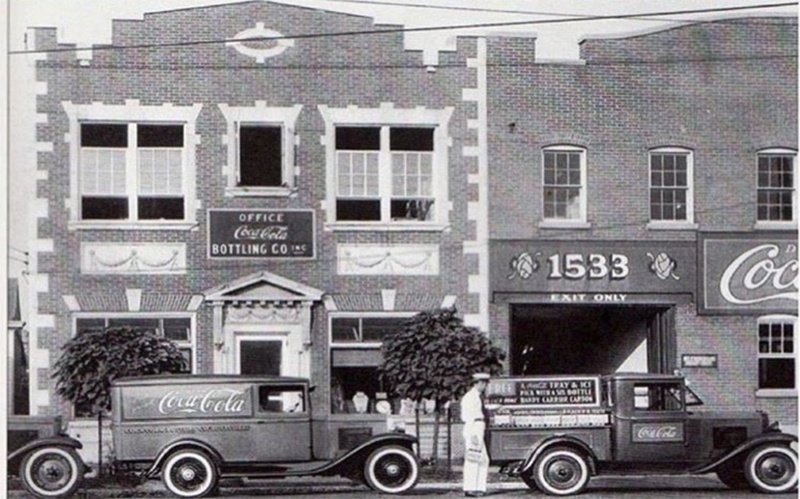KFI Studios Continues Evolution
It’s hard to imagine a company that has evolved as much when it comes to design than KFI Studios. The company began making stacking chairs sold through catalogs and has morphed into one of the most dynamic brands in the office furniture industry by focusing on design above all else.
The company has gone from stackers to some of the most innovative and refreshing designs found in the industry. If KFI has a “look,” it could be best described as having the aesthetic appeal and simplicity of Scandinavian design, mixed with a dash of the clean lines found in European furniture and a hefty dose of North American comfort.

Companies are a reflection of where they are located, which is true for KFI. Based in Louisville, KFI is at the same time playful and hardworking; conservative and dynamic; fun and functional. The company is also a reflection of its owners, Chris Smith and Scott Williamson, former fraternity brothers at the University of Kentucky with absolutely no office furniture industry experience who bought the stacking chair catalog business from another common friend’s father. The pair had worked in large corporations, but realized they wanted to leave the bureaucracy behind to work together.
Smith, the chief executive officer, is the idea man who is determined to push KFI farther and farther ahead on its journey toward becoming one of the top design brands in the industry while Williamson, president, is the levelheaded businessman. Smith pushes Williamson to stretch and take chances on design while Williamson keeps Smith’s ideas grounded and sound, all done over an occasional glass of their favorite bourbon.

The shift from stacking chairs to design didn’t happen by chance. It truly has been a 24-year evolution. Smith said when he and Williamson purchased the company, it was “a nice little business” with national reach through mail order catalogs. The first thing they did was hit the road to soak up information and knowledge.
The arrival of the internet would forever change the course of KFI’s business. Smith said they embraced the internet before many in the industry, which forced the company to focus on adding images and renderings and promoting itself online, which led to rapid growth.

The company could have simply kept going with its stacking chair business, but they found themselves at a crossroads about eight years ago. “We had dipped our toe [into the contract market] with some new products that fit into the aligned dealer world. We were starting to get some bigger orders and we were like, ‘Oh wow, the [big] dealer’s buying from us. That’s great.’ We knew we wanted more of that business,” he said.
At the same time, things were shifting in the stacking chair sector. Inexpensive products were flooding in from China and the owners could feel the sense there would be a race to the bottom that was all about inventory and price. If KFI was going to go that route, it was faced with the fact that it would have to open distribution centers across the country. The business model was low prices, low margins and high volume. The other option Smith identified was to, “go headfirst into the architecture and design world, not knowing really, honestly, a damn thing about it.”

Yet KFI’s roots in the low cost sector had its advantages, even in the world of architecture and design. KFI started as a business that relied on keeping stock and servicing its customers. That service level has remained the same. “I think that has been a huge [part of our evolution],” Smith said. “We still have that service mindset here. Our service level has remained the same. I know every company says that, but we are really serious about having a very good experience.”
Changes at KFI can’t really be characterized as an evolution so much as a total reimagining of the business. The owners wrote a new business plan and sold part of the company to a private equity firm to raise funds for the shift [though both remain owners of the business and run day to day operations].

“It has been this slow shift into the A&D world, and we’re still in that shift in my opinion,” said Smith. “But we immersed ourselves into design, which we never had. We said design was our first priority. It’s not unlike when we first bought the company. It is just digging in, being humble and learning and being a sponge about what do we need to do to be a serious player in the A&D world. We knew we had the financial backing; we had to have the strategy.”
Moving forward, he said the challenge for KFI is to create thoughtful, good design. KFI is doing that by working with experienced furniture designers like Benjamin Hubert and his studio, Layer, who designed a seating collection that KFI launched this year called Vale.
Vale is the first line of PET felt seating created by an American manufacturer. The Vale seating collection features an armchair, side chair, lounge chair with ottoman, counter stool and barstools. The collection is designed for the office and demand by commercial clients for furniture that supports employees’ desire for hospitality-style spaces. With sustainability at the forefront of the design process, the pressed felt chair shells are created with PET made from recycled plastic bottles.
Smith found hiring one of the top industrial designers in the world like Layer, which designed new airplane seating for Airbus, speakers for Bang & Olufsen and products for Vitra, isn’t as easy as just picking up the phone and calling them. At first, Layer didn’t reply to Smith’s enquiries, but he was persistent. Finally, he got a call from Hubert’s assistant who set up a meeting.
“He said, ‘You seem like a great guy, but I’ve never heard of you. Why would I work with you?’ And I remember telling him, I said, ‘Well you’ve worked with some huge companies. With us, you can change the dynamic of a company.’ That was when I really realized that we have a lot to say, but if you don’t get noticed, you don’t get a chance to say it. And having design really gives us an opportunity to tell the rest of our story. We’ve got a pretty good story on a lot of levels here.”
Smith said that as long as he’s part of the company, KFI’s evolution will never truly be finished, though he added that the company is probably three years away from what he would consider a compelling, complete offering of products. KFI will continue to focus on ancillary products, a strength of the company today.
KFI has come a long way, but it continues to refine its offerings. It is working to improve its expertise in upholstery. It is adding to its soft seating and lounge offerings. And it is further integrating itself in the design industry in some unique ways, including a display on the first floor of theMART using PET shells from its Vale seating and a little design help from Layer to create a memorable sculpture that was on display during NeoCon. To give you an idea of the company’s roll-up-its-sleeves mentality, Smith and his son literally built the exhibit on site the weekend prior to NeoCon.
“You can’t just come into an industry that’s been around and expect people to recognize you,” he said. “You’ve got all these established companies and if you just start developing products and doing things the same way they do it, you get lost. So we asked ourselves: How do we weave our way into this industry? And why do we matter? You have to have something different. You have to do something different. You have to get noticed.”
As KFI continues to move deeper in the world of design, it isn’t surprising that the company is bumping into competitors like Hightower, Andreu World and Allermuir, all great brands that are much farther along in their corporate journeys.
Smith said he wants designers to be able to differentiate between KFI and any other manufacturer in the market. He hopes its service, quality and a timeless designs stand out. Its Avalon chaise is a good example of this. Avalon was created by Union Design as a product for the workplace that allows your body to be fully reclined for lounging while keeping your head in an actively engaged position. It can be used on its own or paired with its accessories like a swivel table and/or screen with side table and coat hook. The 3D knit used on Avalon is made from recycled plastic bottles.
A common theme in KFI’s furniture is sustainability. From the PET Vale chair to the knit on Avalon, the company wants to protect the environment and encourage sustainability at every step, including KFI’s headquarters itself, a former Coca-Cola bottling plant in a part of Louisville that is being redeveloped and repurposed. Another good example of its environmental stewardship is its Jade task chair, again made from recycled bottles and designed so it can be easily deconstructed and recycled at the end of its useful life.
While KFI’s focus is on ancillary furniture, it also added a line of outdoor furniture to its offering.
In a conference room at KFI’s headquarters is a white board covered in dozens and dozens product photos. Some are of KFI’s prototypes. Others are inspirational from other industries or products from other manufacturers that Smith admires. They are idea starters for the company.
And if they are any indication of the direction KFI Studios is headed, the future in Louisville is bright indeed.



